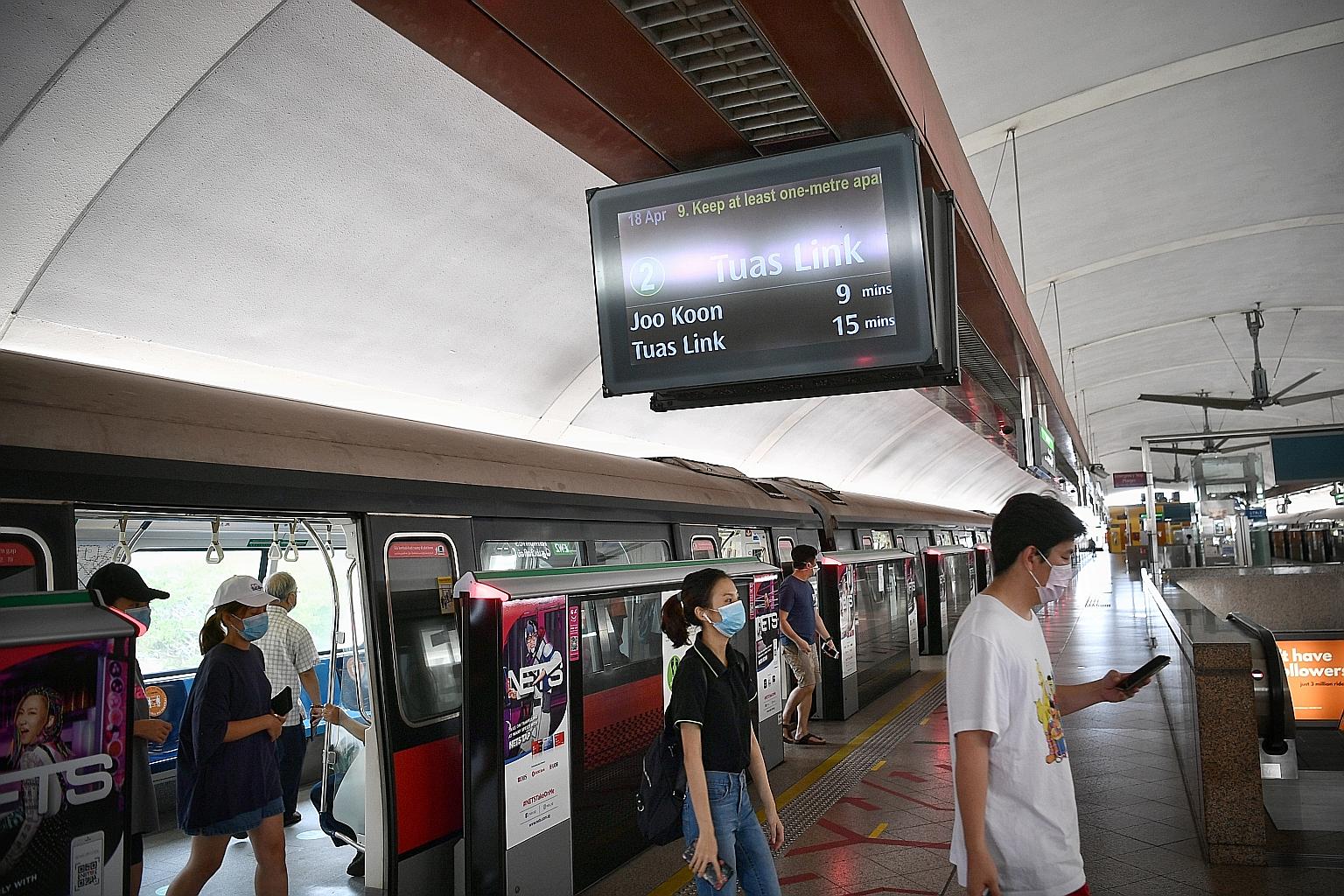Coronavirus: Reduced frequency of trains leads to crowding on some
Khaw Boon Wan says LTA has been told to review and over-provide if need be
Sign up now: Get ST's newsletters delivered to your inbox

Commuters at Tampines MRT station at 4pm yesterday. Although trains may not be crowded during non-peak hours, some commuters have found themselves in packed train carriages since service frequency was reduced on Friday, and have taken to social media to vent their frustration at not being able to exercise safe distancing in such circumstances.
ST PHOTO: ARIFFIN JAMAR
Follow topic:
Reports of crowded trains on the first day of lower service frequency have prompted Transport Minister Khaw Boon Wan to ask for a review of service reductions which kicked in last week.
Mr Khaw wrote on his Facebook page yesterday that the service adjustments had "caused some crowding in some stretches" of the North-South, East-West and Circle lines on Friday - the first day when train service frequency was pared down to reflect the 70 per cent to 75 per cent drop in ridership.
Government officials have also been seeking to pare down the numbers of essential staff who are needed, to help curb the risks of social spreading of infections during the circuit breaker period. This, inevitably, would mean less frequent trains.
In response to queries from The Sunday Times earlier, the Land Transport Authority (LTA) said it was monitoring the situation and will make the necessary adjustments.
Mr Khaw said: "I have told LTA to err on the side of generosity. That is, to over-provide rather than under-provide."
He said that during this circuit breaker period, the "priority is safe distancing and ensuring our essential workers can reach their workplaces safely and punctually".
On Friday, MRT service intervals were five and 10 minutes for peak and non-peak periods respectively - down from two and five minutes before the coronavirus outbreak prompted people to work from home, and students to go on home-based learning.
But according to some commuters, the intervals were as long as 12 minutes.
Several bus services were also suspended, mostly express and night services.
As a result, commuters found themselves on packed trains, and some on crowded buses. They took to social media to vent their frustration, asking how they were supposed to exercise safe distancing in such a situation.
Photos of packed train carriages were also widely circulated, showing commuters occupying even spaces marked out by safe distancing crosses.
Among those responding to the public reaction was Professor Teo Yik Ying, dean of the Saw Swee Hock School of Public Health at the National University of Singapore. Prof Teo told The Sunday Times: "Reducing service frequency is a fair response (to the drop in demand), but it should be done off-peak."
He added that during peak hours, there are essential workers who need to travel by public transport for work. Having crowded public transport, he said, would thus be "counter to our circuit breaker objectives".
Prof Teo said that the top priority was for commuters to be able to practise safe distancing. With the lower service frequency, this may not be possible.
"Human psychology is such, if you know the next train is 10 minutes away, you will not wait. You will squeeze onto the one in front of you."
He added that going by the many posts on the topic, the "situation is frustrating for many", and he hopes service frequency can be adjusted quickly.
Singapore University of Social Sciences transport economist Walter Theseira said: "The principle behind service reductions to save public money is sound, as services cannot break even with low passenger loading.
"But clearly, fine-tuning is needed. It may be that the essential services workers have to be required to implement staggered opening and closing times to spread out the load.
"Otherwise, it will be very difficult to reduce services and maintain safe distancing."

